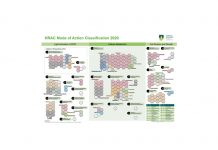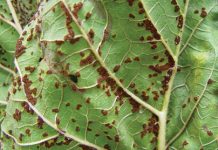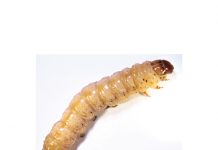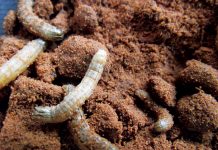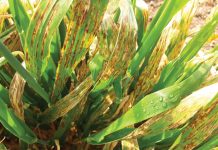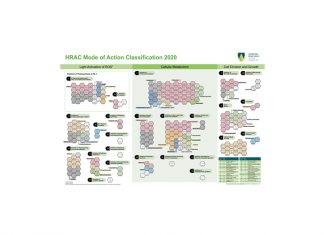
ARC-Grain Crops,
Potchefstroom
Six Urochloa-species are found in South Africa, of which bushveld herringbone grass (Urochloa mosambicensis or bosveldbeesgras) and herringbone grass (U. panicoides or beesgras) are important grass weeds.
Both of these weed species are documented to be widespread throughout Southern Africa. There has been an escalation of reports from producers in both the eastern and western maize production areas regarding increased infestation levels of Urochloa spp. and the difficulty to control these grass species effectively.
As weed science is not only limited to the herbicides that control weeds best, but is also about their biology, research studies are often conducted to establish aspects such as the competitive ability of weeds. Weed management would be greatly enhanced with accurate predictions of weed species composition as well as of the relative aggressiveness of the group of species exploiting the same resources. The competitive ability of bushveld herringbone grass and herringbone grass will be discussed in this article.
Herringbone grass (Photo 1) is an annual grass, common in cultivated fields with a preference for clay soils. Apart from goose grass (Eleusine coracana), herringbone grass is listed in Common weeds of crops and gardens in Southern Africa to be the most important grass weed in North West and the north-western parts of the Free State. Bushveld herringbone grass (Photo 2), a perennial grass, occurs to a lesser extent in cultivated fields and mostly prefers fertile sandy loam soils. In Southern Africa, the grain of this weed is commonly used as a cereal, with the ground grain made into a porridge. Bushveld herringbone grass is a useful, drought-resistant, palatable pasture grass which is suitable for haymaking and also do well in intercropping with leguminous pasture plants. In Southern Africa, bushveld herringbone grass is primarily sown to improve overgrazed pastures, whilst in countries such as India and Australia, it is used against soil erosion and for the rehabilitation of mine sites. A comparison of the growth patterns and flowers of these two weeds are provided in Photo 3 and Photo 4.
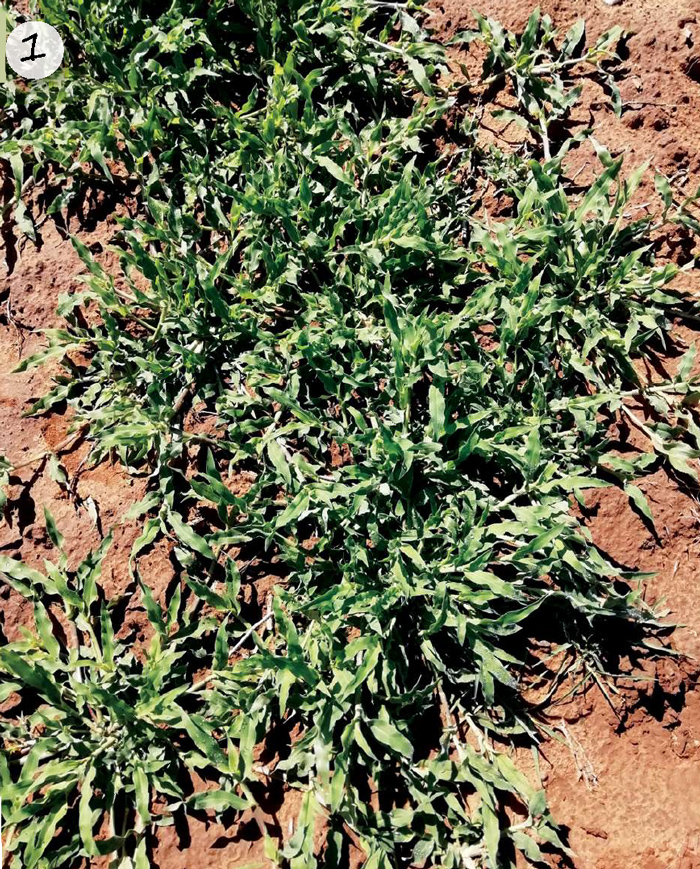
Plasticity
Although reference has been made to the soil type preference of these two species, these statements have been made based on observations of where the two types of weeds were observed more commonly. No scientifically sound information is available as to their ability to compete for availability of resources, or whether the soil profile (wet versus dry) would influence their competitive ability. International literature states that the ability of plants to increase their performance by taking advantage of free resources may depend on plasticity of functional traits such as the root-shoot ratio.
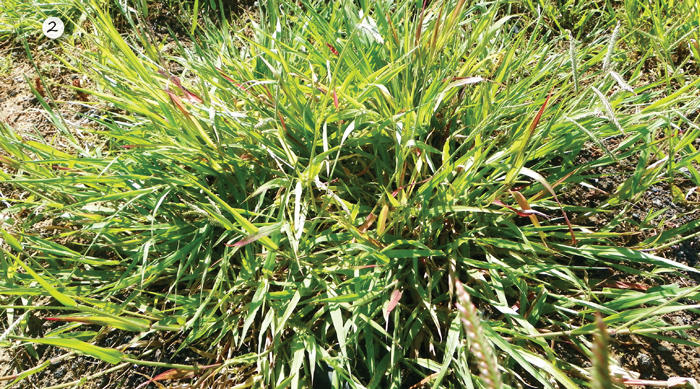


The capability to adapt and cope with changes in the environment (plasticity) can accordingly contribute to the invasion success of alien plants. Increases in root-shoot ratios indicate that shoots have a higher priority for photosynthate accumulation than roots. If root-shoot ratios decrease with time, roots have preferential utilisation of photosynthates under the existing plant growth conditions. A relatively high conservation of photo assimilate in shoots may increase the plant’s photosynthetic leaf area, while decreasing root biomass and the plant’s capacity for water and nutrient uptake. Environmental stresses increase the relative weights of roots compared to shoots. The preference as to a high versus a low root-shoot ratio would be dependent on the purpose of the crop. Crops of which only the above-ground biomass is harvested, would not benefit from a relative high investment in the root system to the same extent as an invading wild plant species.
A weed is, however, only ‘a plant out of place’. This is definitely the case with bushveld herringbone grass, as this weed also doubles as a pasture grass. Knowledge of the competitive ability of these two weeds, would accordingly not only provide a better understanding regarding requirements for weed control, but will also provide insight with regard to the pasture- or intercropping-related potential of bushveld herringbone grass.
Weed competition
Internationally, weed competition is defined as an interaction between individuals, brought about by a shared requirement for a resource in limited supply, leading to reduction of the performance – such as growth and/or reproduction – of at least some of the competing individuals. Various designs for competition studies have been described internationally, of which the replacement series design is a common design used. In a replacement series experiment, a set of pure and mixed populations is tested in which combined density of the components is held constant. The replacement series is used to determine which of two species is the most competitive and assists in gaining insight into plant-to-plant interactions. The ARC-Grain Crops’ weed science section recently completed and published a research study to determine the comparative level of bushveld herringbone grass and herringbone grass for a wet and dry soil profile in two soil types (16% clay and 35% clay). The four environments tested consisted of a wet and a dry soil profile in two soil types, namely sandy loam (16% clay, 79% sand and 5% silt) and sandy clay loam (35% clay, 59% sand and 5% silt).
Findings of the study confirmed observations that bushveld herringbone grass performed best in 16% clay soils, with greater performance observed in the wetter profile soils, whilst herringbone grass preferred the 35% clay in dry environments. Bushveld herringbone grass, however, demonstrated a greater plasticity than herringbone grass regarding adjusting its root-shoot ratios in changing environments in the 35% clay soils, suggesting bushveld herringbone grass to be the more successful species.
The relevance of the findings regarding the current study, speaks to both the weed control aspect as well as the grazing and crop-livestock integrated systems. Three times more herbicides are registered for the control of herringbone grass in maize compared to bushveld herringbone grass. The plasticity of bushveld herringbone grass, however, indicates that the weed is able to adapt in soils with higher clay and can accordingly spread to more production areas. Assuring that the problem weed is correctly identified and that a registered herbicide for bushveld herringbone grass control is applied, will accordingly be crucial for control.
Possible uses
It has been established internationally that perennial grasses can be strong competitors with non-native annual grasses. Bushveld herringbone grass, being a perennial with greater levels of plasticity, could accordingly be investigated as a biocontrol measure for especially grazing areas. Lastly the quality traits identified in bushveld herringbone grass might make it a suitable candidate for crop-livestock integrated systems. In an attempt to optimise the sustainability of no-till systems in Brazil, it has been suggested that Urochloa (syn. Brachiaria) species be grown in crop-livestock integration systems – either for their use as cover crop or for fodder production. The periodic, short-term incorporation of a perennial forage grass as a cover crop, such as palisade grass, is recommended to increase grain production and to improve the soil fertility of grain-production areas.
The cultivation of grass species during autumn and winter increased soybean grain yield in comparison to a fallow period preceding soybean. The combined presence of roots and straws conferred a better performance to soybean than the isolated presence of roots or straws (no water deficit occurred during the cultivation of soybean). Should crop-livestock integrated systems be refined for South Africa, bushveld herringbone grass should again be investigated as a possible option for such systems. Additional studies will, however, have to be conducted to investigate their interference with grain production.

Producers can contact Dr Maryke Craven at 018 299 6100.



